Kodiaq vs Tiguan vs Compass vs Hexa vs MU-X vs Endeavour: Comparison
What happens when you line up the Skoda Kodiaq, Volkswagen Tiguan, Jeep Compass, Tata Hexa, Isuzu MU-X and Ford Endeavour around the dirt? Well, an off-road battle is just inevitable.
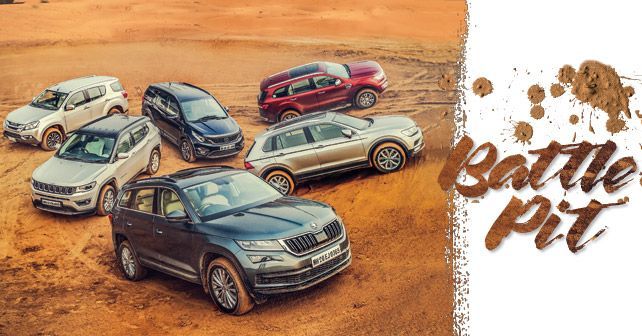
In this mega off-road test, we find out if the electronic age has actually made our SUVs any better. Are the mighty, mechanical 4x4 mechanisms really being challenged by the new-age electronic all-wheel drive systems? Cue some rather enjoyable research…
They call this the electronic age, and rightfully so. Pretty much everything today is digital or electric – from your shaver to your microwave, from your iPad to your toothbrush. And there’s a very good reason for this. Most electronic items are far more efficient and functional than their analog predecessors. Take, for example, heating food over a gas stove. It would require quite an elaborate plan to transfer dishes, spend time heating the food of course, and then laying it all out on the table. Or you can simply take a dish out of your fridge, put it in the microwave for about 2 minutes and voila your food is ready to be served. The electronic age, then, makes life simple, easy, quick and efficient.
But, then, you would also know that a gas stove yields a much better result. So, electronics haven’t quite eclipsed the mechanical age just yet.
And that’s the case when it comes to automobiles as well. Sure, electric cars are all the rage these days but just how many people are buying them – well, just about 1% of the car buying public at the present moment!
At this point, you’re probably wondering what a microwave and an electric car have in common with the group of SUVs that you see here. Well, long story short, the electronic age has quite literally turned their world upside down.
Also read - Toyota Fortuner vs Ford Endeavour + Isuzu D-Max V-Cross: Comparison
Don’t be fooled by those 4x4 badges
A proper SUV is packed with mechanical components that have been developed and honed to perfection over decades to provide virtually go-anywhere ability. The digital alternative, however, aims at providing you with a much simpler solution. In order to get a clearer picture of this, take a look at the box to the right.
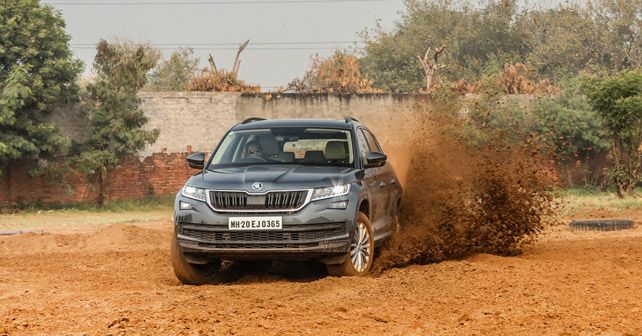
Now that you know the difference between your average new-age SUV, with all-wheel drive, and a proper 4x4, let’s move on to the cars in question.
Divided by an invisible line are the new Skoda Kodiaq, Volkswagen Tiguan, Jeep Compass and Tata Hexa with their electronic torque vectoring all-wheel drive systems, while the Isuzu MU-X and Ford Endeavour stand apart with their low ratio gearboxes as proper four-wheel drive vehicles.
Let the games begin
I don’t know if you’ve noticed, but the Kodiaq looks a little too posh to be standing around in the dirt. It clearly belongs on tarmac, with its sharp design lines, chrome window trim and paintwork that looks elegant and expensive. Step inside and it’s much the same story. In typical Skoda style, the dual tone cabin has a very neat and uncluttered layout. Silver accents in the cabin lend it an upmarket appeal. The switchgear has a nice damped feel, and everything is well finished – with the only exception being, perhaps, the faux wood panels on the dash and door pads. They’re much too plasticky for my liking. That aside, the seats are firm and supportive – and will make for great companions during long distance touring. The flexibility of seven seats will factor in as a bonus as well. And a seemingly infinite number of cubbyholes and storage spaces in this car makes it that much more practical.
But while all of that is well and good, its now time to find out what it’s like off the beaten track. The driving position in the Kodiaq gives you a good view of the road ahead. So, while I pulled the automatic gear lever (which reads ‘DSG 4x4’) into N, I was left to look for a switch or knob to slot it into AWD mode. All you get here is a Mode button to toggle through the various driving modes, but there is no dedicated AWD mode. It’s worth noting that international models do get an ‘off-road’ button.
Nevertheless, I headed towards the first set of obstacles – which happened to be a set of large inclines. And despite being quite a long vehicle, the Kodiaq managed to clear the obstacles without bottoming out. Moreover, the all-wheel drive system is rather impressive. Without having to adjust anything at all really, I was able to go up a slippery slope with just the prodigious use of the throttle pedal. The car didn’t struggle at all.
Next up was the horizontal incline that elevates two wheels on one side of the car. The Kodiaq was comfortable here too, although it did struggle to go higher beyond a point. It did well at the axle benders too, which puts one wheel of each axle on an incline. Sure, there were times when it did struggle for grip, but it wasn’t very difficult to get the car going again. And since it has decent clearance (of 188mm), I wasn’t worried about it bottoming out. The icing on the cake, though, was the chance to have a little play with these vehicles at speed on the dirt. Put it into sport and turn off the traction control and the Kodiaq is more than happy to go sideways.
Overall, then, the Kodiaq seems to have a good balance between its on and off-road abilities.
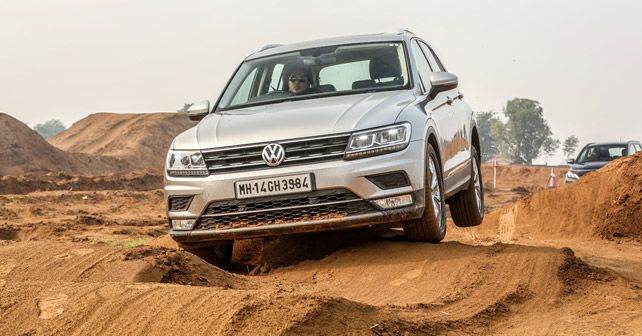
It’s not all in the family
So what about its VW Group cousin, the Tiguan? Well, it’s got the same engine and gearbox, but, in comparison to the Kodiaq, it has slightly less power and a narrower power band. Still, the near 80kg weight advantage combined with a nearly 200mm shorter length makes the Tiguan very sprightly indeed. Don’t get me wrong, the Kodiaq can show most of the traffic on the road a clean pair of heels when the need arises, but the Tiguan really is something else here. In fact, on the road, it’s the fastest car here. But the key word here is ‘car,’ for the Tiguan really does drive like a saloon car. It’s a lot of fun to drive on the road as you dart in and out of traffic and watch everything disappear in your rear view mirror. Its all-black interior has a classy appeal, and, as always, with VWs, everything in the cabin oozes quality. However, the gain in driving dynamics comes at the cost of practicality, as it comes only with five seats.
The Tiguan also has a significantly lower ride height than the Skoda, with a ground clearance of just 149mm, which, combined with its lower 18-degree approach angle, meant that I was fairly hesitant to tackle off-road obstacles in a machine that was clearly not my car. So, in all honesty, we did very little off-roading in the Tiguan. We did check the grip levels over loose surfaces, some inclines and over the axle benders. Overall, VW’s 4Motion all-wheel drive system offers very good grip over loose and slippery surfaces just like the Kodiaq, but it did struggle more over the axle benders. And even though the 4Motion system boasts of being able to send as much as 85% of the car’s power to one wheel, the wheels in firm contact with the ground didn’t have enough power to get them going. Meanwhile the other wheels where spinning helplessly. So, while both these cars have the same AWD system, the Skoda appears to have more articulation that helps it perform better off-road.
Bumper bummer
If the bumper on the Tiguan got me worried, the Jeep’s just got me scratching my head. I’m sorry, but a 16.1-degree approach angle on a Jeep is quite confounding. Yes, this is in the interest of better fuel economy (as it cleans up airflow under the vehicle) and, sure, the lower part of the lip is flexible but it still takes a beating on steep approach and decent angles. Now, sliding the Jeep around was a totally different scenario – as it was very chuckable and responsive – but it wasn’t as much fun as it could have been since you can’t turn the traction control off fully. Plus, the electric parking brake meant that handbrake turns were impossible. So, our childish fun was reigned in by a bevy of clever electronics. And while the Jeep has a lot of grip over loose surfaces – such as mud, sand, and slush – like the Tiguan, it struggled over the axel benders. And if you carry too much momentum, you fear clipping the bumper. If you carry too little, the engine tends to cut out. And when it does, you have to restart the Compass and select AWD Lock and the driving mode you were in all over again.
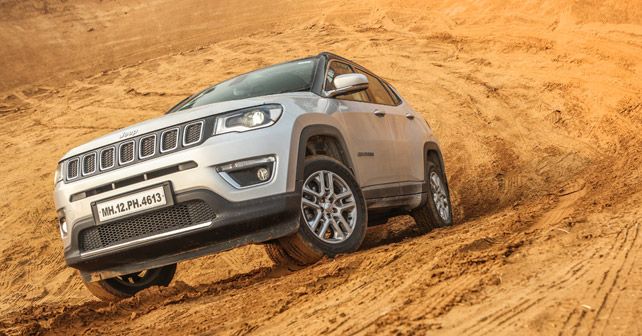
Yes, the Jeep is very good off the road, but it could be a lot better if it had the option of the international spec bumper and the '4WD Low' mode that essentially locks the gearbox in first gear – which is also available in the international model. As is, the Jeep is very comfortable and capable both on and off-road but it’s not exactly ‘Trail Rated,’ as you would expect a Jeep to be.
The Tata revelation
After the Compass, I wasn’t really expecting much from the Hexa. I mean, just how well can an all-wheel drive system move 2.28 tonnes of metal? So, to cut to the chase, I hit the axle benders first. And, boy, was I in for a surprise! With its manual transmission and rear wheel drive bias, the Hexa was just so grippy. The other AWD cars on our list are front-wheel driven vehicles essentially, with power going to the back wheels only when needed.
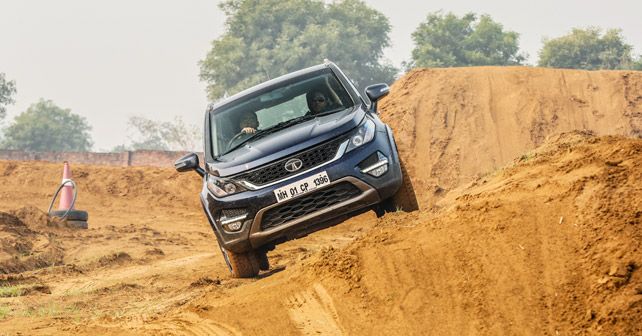
Axle benders in the Hexa complete, I proceeded to the other obstacles. And I’m happy to report that the dips, inclines and loose surfaces didn’t bother the Hexa one bit. With its 400Nm of torque, the Hexa AWD was quite difficult to trip up on this off-road track. Sure, it has the longest wheelbase, but it also has the highest ground clearance at 200mm (amongst the AWD models) – and that certainly came to good use.
Bring out the big guns
No off-road test is complete without a proper 4x4 vehicle – or two! And in order to show these new-age SUVs how it’s done, we roped in two of the most capable 4x4 SUVs on the market.
Let’s start with the more recent model, Isuzu’s MU-X. Unlike the AWD cars on our list, with their monocoque chassis, the MU-X comes with a more rugged body-on-frame platform.
Honestly, I was glad to be back in familiar territory – where you have to slot the primary gearbox into neutral and then select four-wheel drive on the transfer box. Perhaps a manual lever to do this would have been better than a rotary knob for it feel like a proper back-to-basics experience. At any rate, this will do too.
Since the day had, thus far, been full of cautious off-roading, I was getting a little hot under the collar. So I decided to select 4WD Low and aimed the Isuzu for the tallest and steepest incline there was. I came back down the other side grinning for the first time that morning. It was just so easy. With a 3.727 final drive ratio, the MU-X will ascend the steepest of slippery slopes with as much ease as it would take me to walk from my kitchen to the breakfast table. Now this is proper off-roading!
This vehicle can cover almost all of this off-road course in 4WD High. And because it’s a proper 4WD vehicle with a superior approach and departure angles, it will go that much higher on the horizontal incline and get over any of the off-road obstacles faster. And where all the AWD cars struggled back and forth for grip over the axle benders, the MU-X with its 4WD system just sailed over them without a bother.
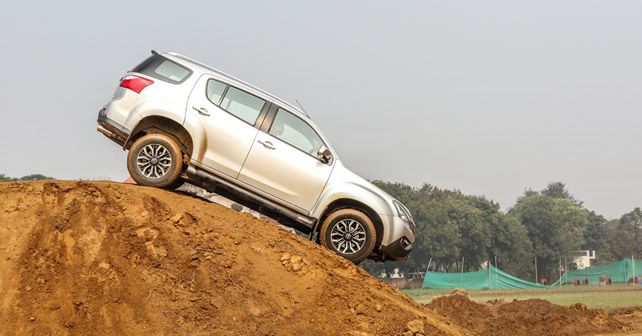
In short, the MU-X puts all the AWD cars here to shame. The only thing that lets it down are those sidesteps that limit the break-over angle at 22.4-degrees. Have those taken off, and I reckon the MU-X will be a force to reckon with on any terrain. What I especially like about the MU-X is that despite its automatic gearbox, it’s very easy to modulate power while off-roading – it feels very natural and organic, like it was built to go down a dicey dirt trail.
Monster’s Ball
In our off-road test last year between the Fortuner and Endeavour, it was the Ford that reigned supreme. So, it’s no surprise that it impressed us this time around as well. The smooth and refined nature of the Endeavour shines through while off-roading. Unlike the Isuzu, this comes with a full-time four-wheel drive system. But, of course, you do need to engage 4x4 Low by going into Neutral – and then you can even lock the rear differential to ensure the wheel that needs the most grip gets the required power. This is especially handy in a situation when a vehicle that weighs 2.3-tonnes has grip on only two diagonally opposite wheels, leaving the other two virtually with no grip at all.
Both the Ford and Isuzu have nearly identical approach and departure angles, but it’s the MU-X that has a better break-over angle. So, while the Ford, with its bigger and more powerful engine, diff lock and higher 800mm wading depth steals the show, the Isuzu shouldn’t be disregarded right away – as it’s also extremely capable off road. It was a tough battle, but, once again, the Ford manages to impress with its refined and fuss free nature off road, while the Isuzu makes for a more engaging vehicle to drive. Even though the Ford is more capable, my personal choice would be the Isuzu as it’s that little bit more engaging.
But that’s before you factor in on-road driving dynamics. On the road, it’s the Ford that steals the show. It’s 3.2-litre, 5-cylinder engine feels extremely refined. With 197bhp of power and a massive 470Nm of torque, the Endeavour is very rewarding to drive. I especially like the sound from the engine as you surge forward, while the noise cancelling tech works to ensure that it doesn’t get too boomy in the cabin. The suspension too has been setup very well for a vehicle of its size, and its weight is seldom a problem.
The Isuzu, if anything, handles better and certainly has a more comfortable ride than the Endeavour. And its powertrain is very smooth too. But once you get a taste of the Endeavour’s power, it’s going to be tough to resist. The Endeavour tugs at the heart too with that big imposing front, which gives it a very powerful stance. Factor in its more luxurious interior, feature-loaded equipment list and a more spacious cabin, and the Endeavour once again emerges as the champion.
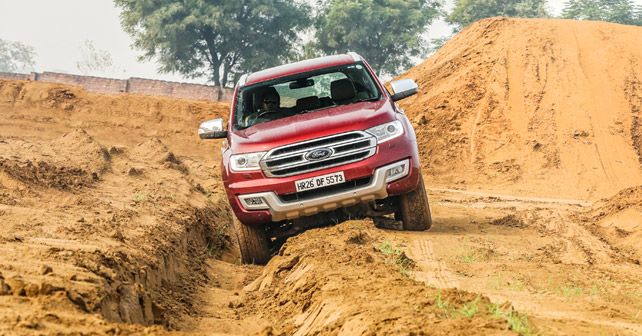
Of course, when it comes to on-road dynamics, the body-on-frame SUVs simply can’t compete with the car-based SUVs that they have to contend with these days. The Tiguan and Kodiaq drive almost exactly like the cars that they’re based on – with the exception of being just that little bit higher off the ground.
Electronic Age vs. Mechanical Era
It’s clear that the electronic age is well and truly here, but it’s the mechanical era that still triumphs in the world of SUVs. Computer controlled all-wheel drive systems just aren’t as capable during proper off-roading as their age-old mechanical four-by-four systems. Yes, they can deal with the rough stuff just fine, but when the going gets really tough, you simply can’t do without that low range gearbox, which multiplies the driving force to the wheels.
Sure, many of these car-based SUVs sport 4x4 badges – but that’s more a function of the marketing departments of these automakers trying to get these vehicles to appeal to a wider audience rather than a function of their true capabilities. Of course, AWD certainly trumps two-wheel drive – by a mile – but it’s equally inept in the face of a proper four-wheel drive system.
So, if you want to do some serious off-roading, be sure to gravitate towards the old faithful butch SUVs like the Ford and Isuzu in favour of the more modern and comfortable options from the likes of VW and Skoda. Looks like old is gold after all! Of course, if you hardly ever intend to leave the tarmac, the comfort and refinement of the Skoda is hard to beat.
AWD vs 4WD
All-wheel Drive
Computer controlled automatic all-wheel drive systems are, essentially, two-wheel drive systems for the most part. In most cases, AWD systems allow a vehicle to run as front-wheel drive cars. Power is sent to the front wheels at all times, and is only sent to the rear wheels when the front wheels run out of traction. The system works in exactly the opposite direction in the Hexa, as it’s rear-wheel driven under normal conditions. Automatic AWD systems are computer controlled, which means wheel speed sensors determine when the vehicle needs to go into all-wheel drive. Some systems have the option of allowing you to lock the drivetrain in AWD up to a certain speed. The biggest benefit of an AWD system over a 4WD system is that it’s far more fuel efficient, as there’s no need to lug around a heavy transfer case and centre differential.
Fulltime Four-Wheel Drive
The Endeavour comes with Full Time 4WD. This means that it comes with front, rear and centre differentials, which are operated by the transfer case at all times. The open centre differential allows the front and rear differentials to operate at different speeds to prevent a transmission wind-up.
You can also select low ratio 4x4 to get the transfer case to imply gear reduction, which in turn will dramatically reduce speed but significantly increase torque availability, thereby allowing the vehicle to generate significantly more traction at all four wheels.
In addition, the Endeavour comes with a rear differential lock that allows it to send equal power to each wheel to ensure both wheels have enough power, even if one of them doesn’t have adequate traction.
Part time Four-Wheel Drive
In part time 4WD drivelines, such as in the MU-X, the car has front and rear differentials. On high traction surfaces, such as tarmac, the vehicle is driven in 2WD mode where the engine power is only sent to the rear differential. You have to stop the car and put the gearbox in Neutral before engaging four-wheel drive. Modern cars allow you to select 4WD high on the go up to a certain speed.
Since it’s a part time four-wheel drive system, both the front and rear differentials will get 50% of the power and spin at the same speed. As a result, it’s advisable to use 4WD only over loose surfaces and not tarmac.
Selecting 4WD low will imply gear reduction, which will significantly bump up torque output and traction, allowing the vehicle to deal with a variety of low traction situation with relative ease.
LADDER FRAME vs MONOCOQUE
Body-on-frame SUVs are regarded as being better off-road as any impact on the underbody (quite common in off-roading) is absorbed by the chassis. This means that the body doesn’t take a beating. Ladder frame chassis are also easier to repair. Monocoque chassis, on the other hand, are more rigid and make for better ride comfort, but several impacts over time can result in the doors not closing properly or even cracks in the body.
ADVENTURE PARK
We conducted this test at The Adventure Park (TAP), which was conceived by Akhil Ghai, a rally driver and off-road enthusiast, and Srikant Sambamoorthy. TAP isn’t just for enthusiasts, but for their families as well. The facility spans over 20 acres between Sohna and Damdama, near the national capital, and has a 2.4km dirt track with 6 different configurations. A variety of off-road obstacles include various approach and departure angles (up to 65-degrees in approach & 85-degrees in departure), articulation humps, chicken holes, and an articulation ring. There’s also a slush pit and the highest hump measures 22-feet. The track is sprayed with a sand binding agent to contain dust and there are sprinklers around the track. There’s also a boot camp with a host of obstacles, a rope course, a zip line, a camping site and in-house catering. You can contact Akhil Ghai at 97177 63757 for more details.
Engine: 1,968cc / In-line 4-Cylinders / 16 Valves / DOHC / Turbocharged
Fuel: Diesel Transmission: 7-Speed Dual Clutch AT / All-Wheel Drive
Power: 148bhp @ 3,500-4,000rpm
Torque: 340Nm @ 1,750-3,000rpm
Price: Rs.34.49 lakh (Ex-showroom, Delhi)
X-factor: Great all-around SUV – premium, well equipped, comfortable and capable.
| Pros • Looks and feels like a luxury SUV • Seven-seater practicality | Cons • Not for hard-core off-roading • Firm ride |
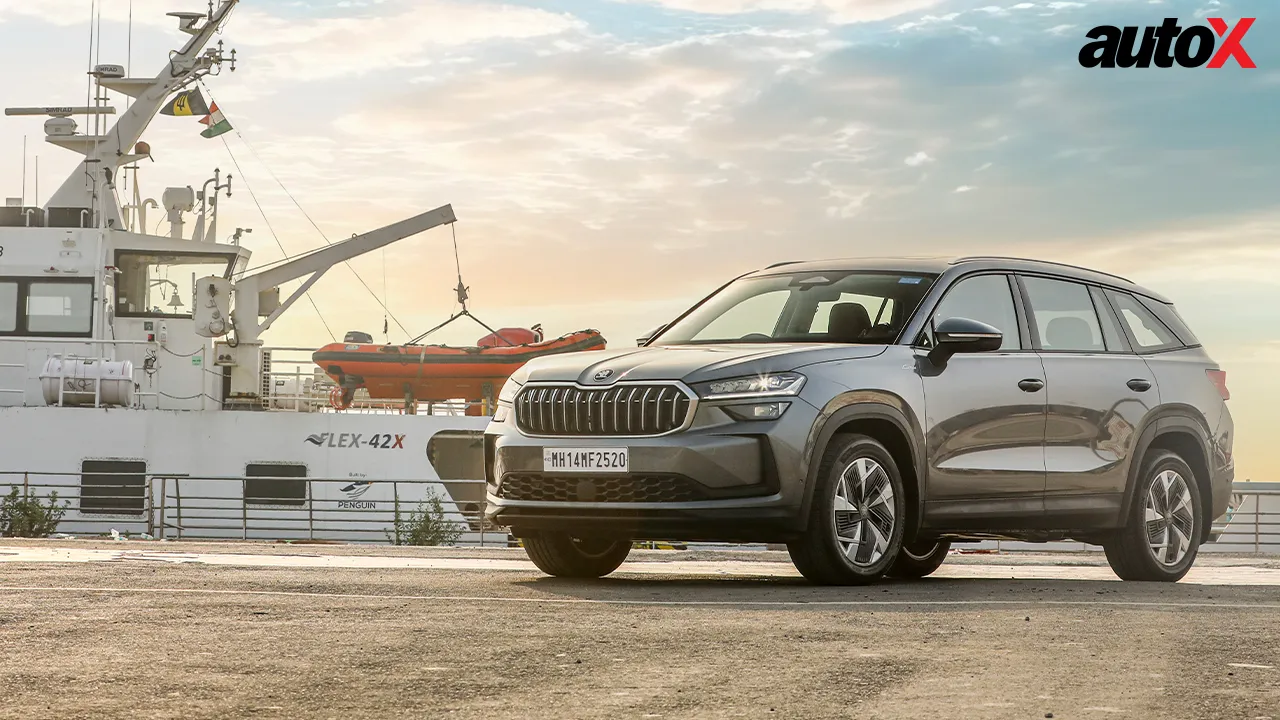

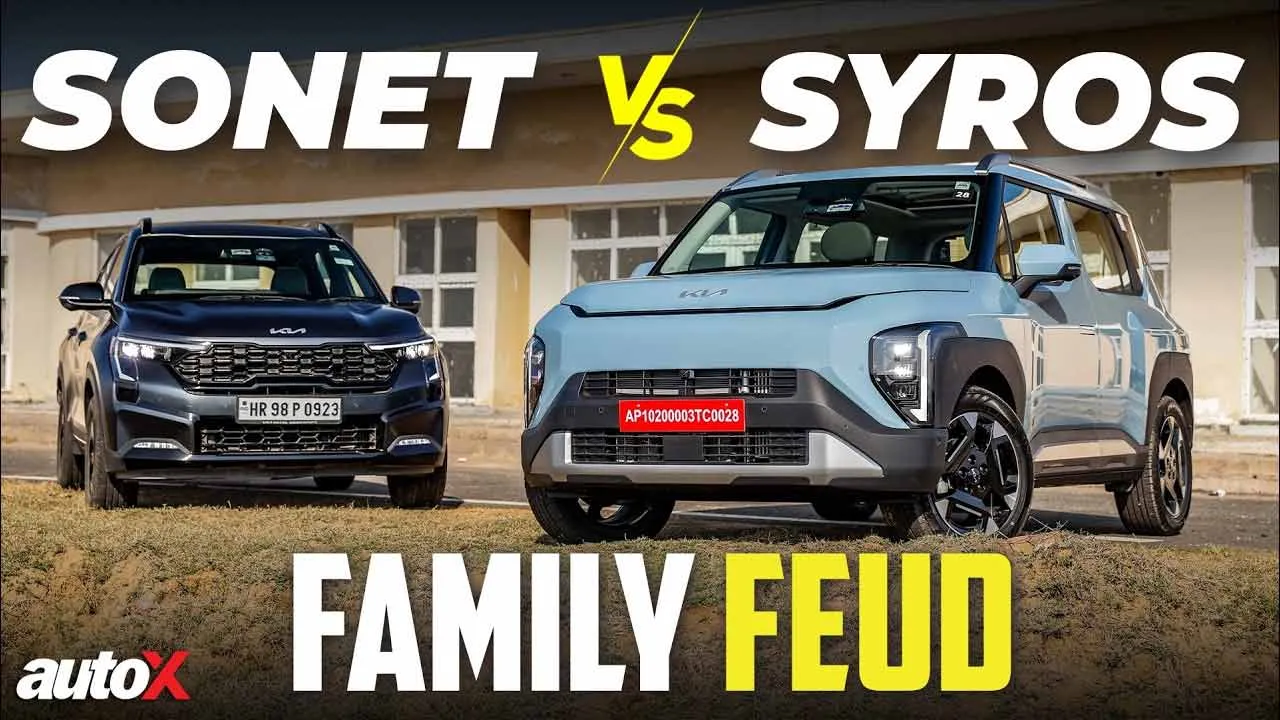

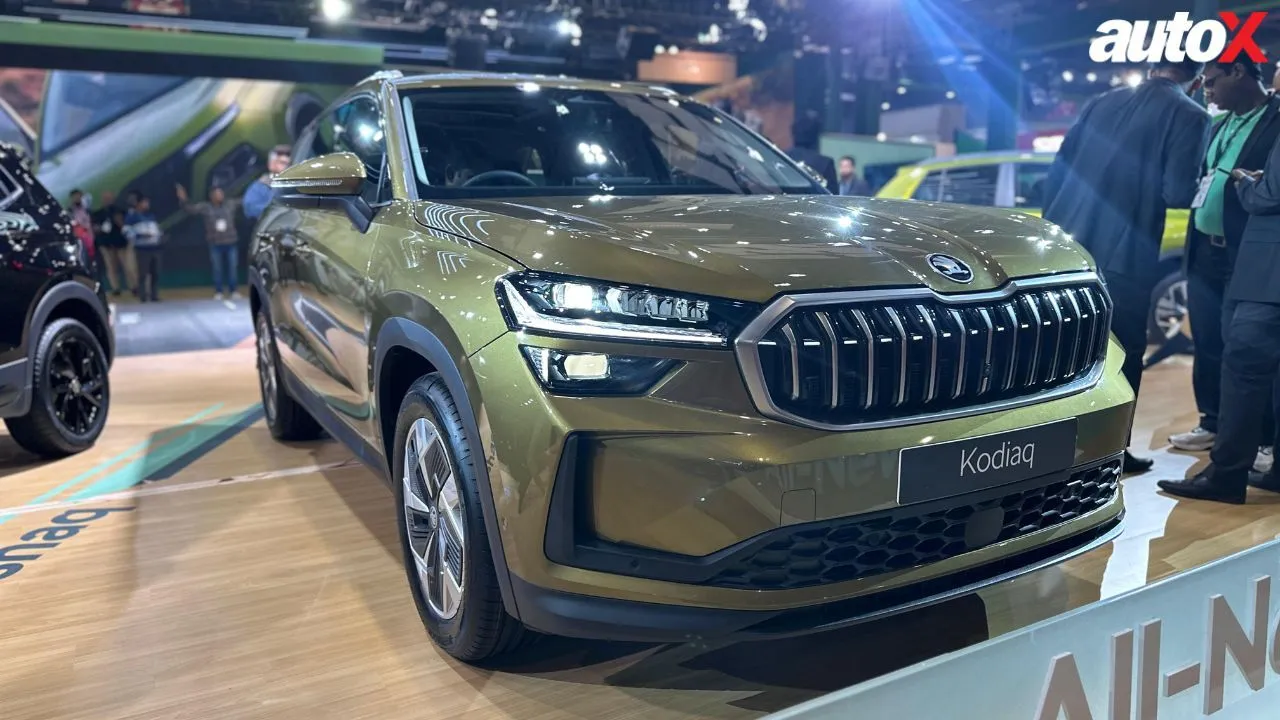
























Write your Comment on